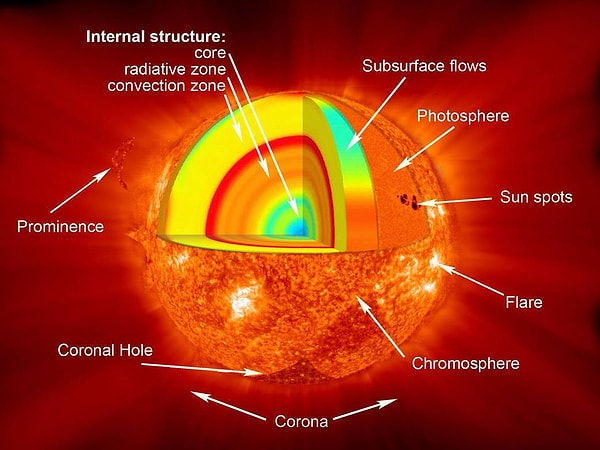How Hot is the Sun? Discover the Scorching Temperatures of Our Star
Even a slight increase in temperature on Earth can cause significant issues for us. So, have you ever wondered just how hot the Sun is, especially when we feel its effects from a staggering 149.6 million kilometers away? Let’s take a fiery journey to the heart of the Sun and explore its blistering temperatures!
The Sun, much like an onion, is made up of numerous layers, each with its own unique temperature and characteristics.

The innermost part, the core, is the Sun’s powerhouse. Here, temperatures can reach a scorching 15 million degrees Celsius! Have you ever tried to imagine such heat? Let us put it this way: that’s 2,600,000 times hotter than your average cup of coffee.
Outside the core lies the convective zone.

This is the layer where heat is transferred toward the Sun’s surface via convection currents, much like boiling water in a pot. Here, temperatures drop to a ‘mere’ 2 million to 5,500 degrees Celsius. Moving outward, we reach the radiative zone, where temperatures range from around 7 million to 2 million degrees Celsius. It’s not as hot as the core, but still far hotter than anything we can imagine on Earth.
The photosphere is what we generally consider the surface of the Sun.

It is the region where sunlight is emitted, and its temperature ranges from about 6,500 degrees at the base to about 4,000 degrees at the top. Above the photosphere are the chromosphere and the corona. Strangely enough, the Sun’s outermost layer, the corona, can reach temperatures as high as 1 to 3 million degrees Celsius, even though it is farthest from the core.
So, what causes these astonishing temperatures?

The answer lies in a process called nuclear fusion. At its core, the Sun is constantly converting hydrogen atoms into helium, releasing an enormous amount of energy in the process. This energy powers the Sun and eventually reaches Earth, providing us with light and warmth. It is the foundation of life as we know it.
Another question we all wonder about is this: How is the Sun’s temperature measured?

We measure the Sun’s temperature through a technique called spectroscopy, which analyzes the light it emits. Different elements and ions emit and absorb light at specific wavelengths. By studying these, we can determine how hot it is. Additionally, satellite observations allow us to capture and analyze temperature data without interference from the atmosphere, providing an accurate reading.
Our lives are largely dependent on the Sun’s temperature.

From powering the water cycle to enabling photosynthesis in plants, the Sun’s heat has profound effects on our planet. At the same time, excessive solar heat and radiation can lead to environmental problems such as global warming.
Keşfet ile ziyaret ettiğin tüm kategorileri tek akışta gör!


Send Comment